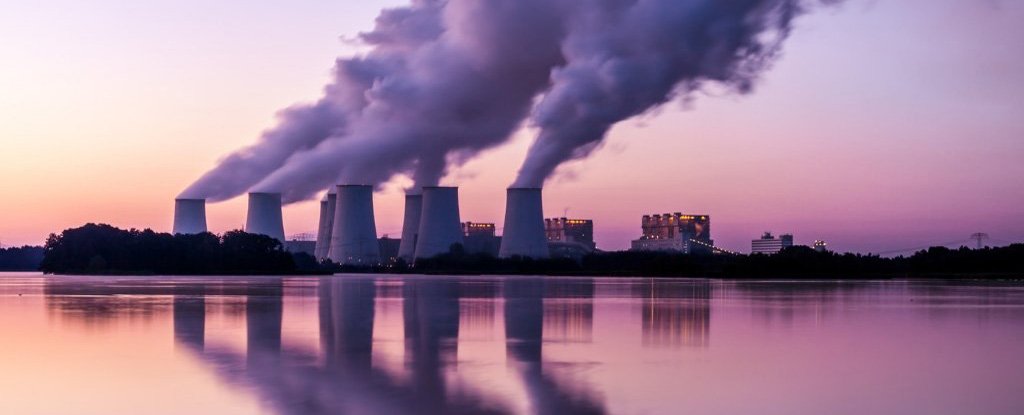Products You May Like
Synthetic gas, or syngas for short, is a crucial building block in the chemical manufacturing industry. Most people may never have heard of syngas, but every day it is used in the production of drugs, fertiliser, plastic, and biofuels.
Unfortunately, even when syngas – a mix of hydrogen and carbon monoxide – is fermented to produce renewable energy, it’s not always a carbon-neutral process. Most of the time, producing syngas means using natural gas or leftover products from coal.
But it doesn’t have to be that way. Syngas can also be made from carbon dioxide (CO2), and scientists in Australia now think they’ve figured out an easy and cheap way to harness that process.
It’s a hugely exciting step, as engineers have been trying to achieve this for years, but many attempts in the past have proved too difficult or expensive to be practical.
By making zinc oxide at very high temperatures, however, the team in Australia has now discovered this process spits out nanoparticles which can be used as the perfect catalyst for turning carbon dioxide into syngas.
Even better, zinc oxide is a relatively cheap and readily available metal, unlike other catalysts researchers have tried before.
“The idea is that we can take a point source of CO2, such as a coal-fired power plant, a gas power plant, or even a natural gas mine where you liberate a huge amount of pure CO2 and we can essentially retrofit this technology at the back end of these plants,” explains chemical engineer Emma Lovell from the University of New South Wales (UNSW Sydney).
“Then you could capture that produced CO2 and convert it into something that is hugely valuable to industry.”
This kind of approach can effectively be seen as ‘closing the carbon loop’ – carbon emitted by one process goes right into another. That’s the dream at least. We still have a long way to go before this method is scaled up and put into practice, but given how widely used syngas is, its sustainable production is worth pursuing.
Syngas is often said to be the chemical equivalent of Lego because it’s made of two building blocks, hydrogen and carbon monoxide, each of which can be used to make a whole bunch of vital industrial chemicals.
Unfortunately, the vast majority of syngas worldwide is made by reforming methane – one of the most potent greenhouse gases out there – using steam at high temperatures.
Finding a more sustainable alternative is a must given the current climate crisis, and the new method devised in Australia is satisfyingly quick.
Producing the nanoparticle catalysts takes just 10 minutes of burning the zinc oxide, without using complicated techniques. Then, the catalysts can be used in an electrolyser built to deal with waste CO2 gas.
“Waste CO2 from say, a power plant or cement factory, can be passed through this electrolyser, and inside we have our flame-sprayed zinc oxide material in the form of an electrode. When we pass the waste CO2 in, it is processed using electricity and is released from an outlet as syngas in a mix of CO and hydrogen,” explains chemical engineer Rahman Daiyan from UNSW Sydney.
What’s more, by controlling how the researchers burn this metal, they could create different ratios of syngas building blocks, anticipating the needs of different industries.
Of course, figuring out a way to use this technology on an actual power plant is still a ways off. But the authors of the paper are confident their method is cheaper and more scalable than other options.
The team is now preparing to test their concept in a larger and more complicated setting to make sure it still works in the harsh chemical conditions found at real-life industrial plants.
The study was published in Advanced Energy Materials.
